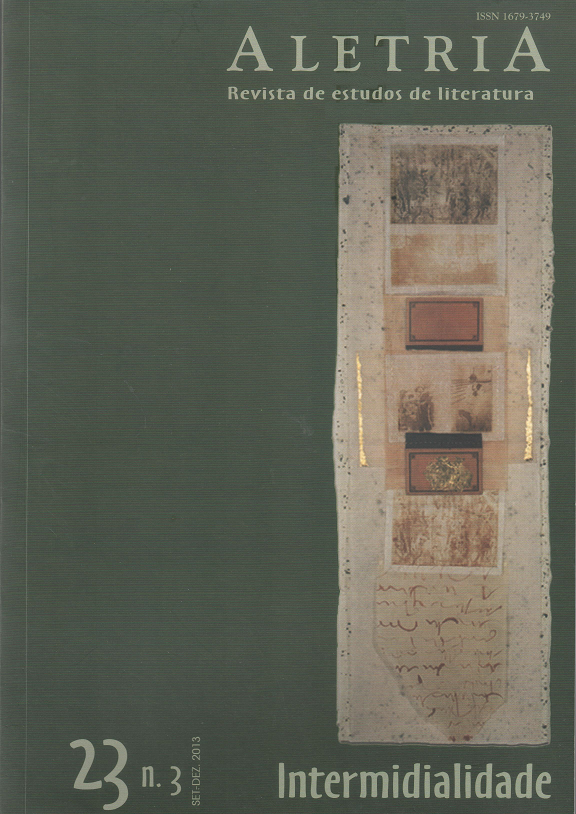Space, Place, Identity: Racial Geographies in Our Nig, by Harriet E. Wilson
DOI:
https://doi.org/10.17851/2317-2096.23.3.187-198Keywords:
space, slavery, race, novel, United StatesAbstract
This essay examines Our Nig, published in 1859 and considered the first novel written by a woman of African ancestry in the United States, as a critique of northern racist attitudes towards blacks in the north, a region usually depicted by southerners as sympathetic to abolitionist movements. Drawing from insights from the fields of cultural anthropology and social geography, the essay discusses how Wilson represents the dynamics of racialized spaces and places, which become handy tools of domination and exploitation of black labor. Through the abuses inflicted on the main character, the mullata Frado, Wilson meditates about the racialization of places in a particular residence, the Bellmont’s. Yet, it becomes evident in the course of the novel that the critical scope is much broader. Besides exposing nineteenth-century racial ideologies which underscored the racial demarcation of spaces and places, by using the house as a metaphor for nation, the author reveals an inherent contradiction in the abolitionist campaign: on the one hand, the abhorrence of slavery; on the other, social segregation of the black subject.
Downloads
References
ELWOOD-FARBER, Lisa. Harriet Wilson’s Our Nig: A Look at the Historical Significance of a Novel that Exposes a Century’s Worth of Hypocritical Ideology. Women’s Studies, v. 39, n. 5, p. 470-489, 2010.
FOSTER, Frances S. Witnessing Slavery: The Development of Ante-Bellum Slave Narratives. Madison: University of Wisconsin Press, 1979.
GATES JR., Henry Louis; ELLIS, Richard J. Introduction. In: WILSON, Harriet. Our Nig; or, Sketches from the Life of a Free Black, in a Two-Story White House. North. Showing that Slavery’s Shadows Fall Even There. Edited by Henry Louis Gates Jr. e Richard J. Ellis. New York: Vintage Books, 2011. p. xiii-lxviii.
GOBINEAU, Arthur. The Inequality of Human Races. Translated by Adrian Collins. New York: Putnam’s Sons, 1915.
HOLT-JENSEN, Arild. Geography: History & Concepts. London: Sage, 2009.
HOOKS, bell. We Real Cool: Black Man and Masculinity. New York: Routledge, 2004.
KNOWLES, Caroline. Race and Social Analysis. London: Sage, 2003.
KNOX, Robert. The Races of Men: A Fragment. Philadelphia: Lea & Blanchard, 1850.
LEFEBVRE, Henry. The Production of Space. Oxford: Blackwell, 1991.
LEVEEN, Lois. Dwelling in the House of Oppression: The Spatial, Racial, and Textual Dynamics of Harriet Wilson’s Our Nig. African American Review, v. 35, n. 4, p. 561-580, 2001.
LOW, Setha M.; LAWRENCE-ZÚÑIGA, Denise. Locating Culture. In: LOW, Setha M.;
LAWRENCE-ZÚÑIGA, Denise (Ed.). The Anthropology of Space and Place: Locating Culture. Oxford: Blackwell, 2003.
NEELY, Brooke; SAMURA, Michelle. Social Geographies of Race: Connecting Race and Space. Ethnic and Racial Studies, v. 34, n. 11, p. 1933-1952, 2011.
ORUM, Antony M.; CHEN, Xing. The World of Cities: Places in Comparative and Historical Perspectives. Oxford: Blackwell, 2003.
PATTON, Venetria K. Women in Chains: The Legacy of Slavery in Black Women’s Fiction. Albany: SUNNY, 2000.
PRICE-HERNDL, Diane. The Invisible Woman. Women’s Studies: An Interdisciplinary Journal, v. 24, n. 6, p. 553-572, 1995.
RAIMON, Eve A. The “Tragic Mulatta” Revisited: Race and Nationalism in Nineteenth-Century Antislavery Fiction. New Jersey: Rutgers University Press, 2004.
RATTANSI, Ali. Racism: A Very Short Introduction. Oxford: Oxford University Press, 2007.
SMEDLEY, Audrey; SMEDLEY, Brian D. Race as Biology is Fiction, Racism as a Social Problem is Real: Anthropological and Historical Perspectives on the Social Construction of Race. American Psychologist, v. 60, n. 1, p. 16-26, 2005.
TUAN, Yi-Fu. Espaço e lugar: a perspectiva da experiência. São Paulo: Difel, 1983.
WELTER, Barbara. Dimity Convictions: The American Woman in the Nineteenth Century. Athens, Ohio: Ohio University Press, 1985.
WILSON, Harriet. Our Nig; or, Sketches from the Life of a Free Black, in a Two-Story White House. North. Showing that Slavery’s Shadows Fall Even There. Edited by Henry Louis Gates Jr. e Richard J. Ellis. New York: Vintage Books, 2011.
Downloads
Published
How to Cite
Issue
Section
License
Copyright (c) 2013 Jose de Paiva dos Santos (Autor)

This work is licensed under a Creative Commons Attribution 4.0 International License.
Authors who publish with this journal agree to the following terms:Authors retain copyright and grant the journal right of first publication with the work simultaneously licensed under a Creative Commons Attribution Non-Commercial No Derivatives License that allows others to share the work with an acknowledgement of the work's authorship and initial publication in this journal.Authors are able to enter into separate, additional contractual arrangements for the non-exclusive distribution of the journal's published version of the work (e.g., post it to an institutional repository or publish it in a book), with an acknowledgement of its initial publication in this journal.Authors are permitted and encouraged to post their work online (e.g., in institutional repositories or on their website) prior to and during the submission process, as it can lead to productive exchanges, as well as earlier and greater citation of published work (See The Effect of Open Access).





